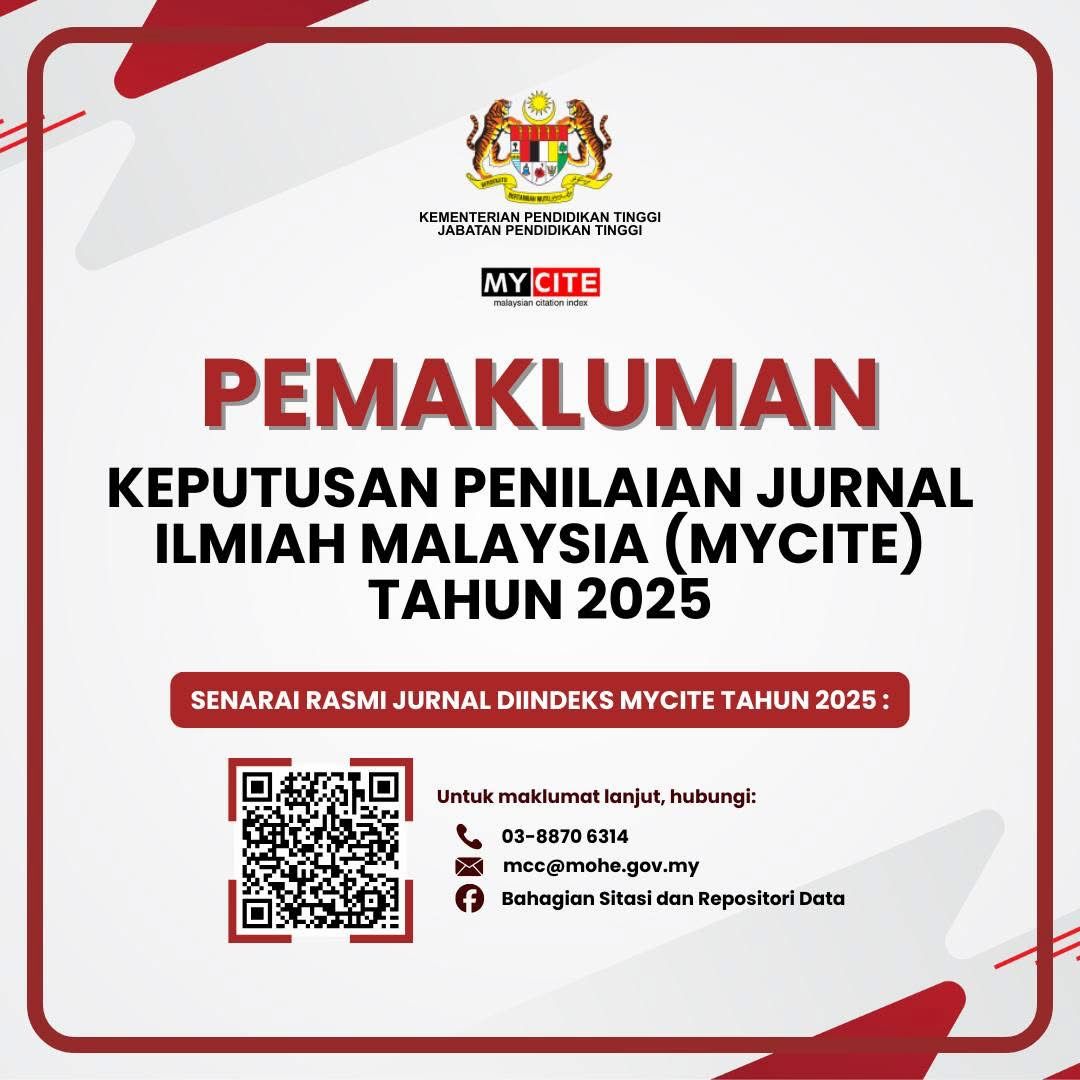Exploring the Usage of Visual Effect in Advertisment for Awareness Campaigns
DOI:
https://doi.org/10.24191/idealogy.v10i2.840Keywords:
Adsvertisement, Social Media, Visual Effect (VFX)Abstract
This study exploring the use of visual effects (VFX) in awareness campaign advertisements through a content analysis approach. In today’s visually driven media environment, awareness campaigns increasingly rely on visual storytelling to convey critical messages effectively. On the other hand, nothing is known about the design and use of VFX elements in these advertisements, including narrative structure, green screen, compositing, colour grading, and typography. The objective of this study is to examine how these five elements of VFX are applied across different campaigns to construct meaning, emphasize key themes, and support emotional tone. This research uses qualitative content analysis as its methodological framework, focusing on ten selected awareness campaign videos. Each video was analyzed through word cloud generation, which helped visually identify and interpret frequently occurring terms associated with each VFX element. The findings reveal that narrative structure, color grading, and typography were consistently rated higher across the campaigns, suggesting that these elements are central to visual clarity and message reinforcement. In contrast, green screen and compositing were used more selectively, particularly in campaigns with more realistic or documentary-style approaches. The study concludes that while all five VFX elements contribute to the construction of visual meaning, those related to emotional tone and storytelling are more consistently integrated in awareness campaigns.
Keywords: Adsvertisement, Social Media, Visual Ef ect (VFX).
References
Banerjee, S. (2019). Elements of multimedia. Chapman and Hall/CRC. https://doi.org/10.1201/9780429433207
Beane, A. (2012). 3D Animation Essentials (1st ed.). Sybex/Wiley. Retrieved from https://dl.softgozar.com/Files/Ebook/3D_Animation_Essentials_Softgozar.com.pdf
El-Desouky, D. F. (2020). Visual storytelling as a tool for communicating messages in digital advertising. International Journal of Marketing Studies, 12(3), 15–26. https://www.researchgate.net/publication/371037952_Visual_Storytelling_in_Advertising_A_Study_of_Visual_Storytelling_as_a_Marketing_Approach_for_Creating_Effective_Ads
Hanzl, M. (2019). The impact of visual effects on public service advertising. Journal of Visual Communication in Medicine, 42(4), 180–192. https://doi.org/10.1080/17453054.2019.1689253
Heimerl, F., Lohmann, S., Lange, S., & Ertl, T. (2014). Word Cloud Explorer: Text Analytics Based on Word Clouds. 2014 47th Hawaii International Conference on System Sciences. https://doi.org/10.1109/hicss.2014.231
Kress, G., & van Leeuwen, T. (2020). Reading images: The grammar of visual design (3rd ed.). Routledge. https://www.academia.edu/123614468/Reading_images_The_grammar_of_visual_design
Krippendorff, K. (2013). Content analysis: An introduction to its methodology (3rd ed.). SAGE Publications. https://books.google.com.my/books?hl=en&lr=&id=nE1aDwAAQBAJ&oi=fnd&pg=PP1&dq=Krippendorff,+K.+(2013).+Content+analysis:+An+introduction+to+its+methodology+(3rd+ed.).+SAGE+Publications.&ots=y_bn0ofNdB&sig=WPuo4CRcdKLqrXqhkghnQAs0rCU#v=onepage&q&f=false
Liu, W. (2021). Research on the application of multimedia elements in visual communication art under the internet background. Mobile Information Systems, 2021, Article ID 5525648. https://doi.org/10.1155/2021/5525648
Iylia, N., Nasir, A., Aniza, N., Lazim, M., Omar, M., Mohd, E., Tan, M., & Ishak, S. (2024). A Visual Analysis Study of Motion Graphic Effect as Visual Communication for Mental Health Empowerment. Idealogy Journal, 9(2), 49–54. https://doi.org/10.24191/idealogy.v9i2.496
Machin, D., & Mayr, A. (2012). How to do critical discourse analysis: A multimodal introduction. SAGE Publications. https://methods.sagepub.com/book/mono/preview/how-to-do-critical-discourse-analysis-2e.pdf
Manovich, L. (2001). The language of new media. MIT Press. https://cjc.utppublishing.com/doi/full/10.22230/cjc.2002v27n1a1280
McNaught, C., & Lam, P. (2010). Using wordle as a supplementary research tool. The Qualitative Report, 15(3), 630–643. https://nsuworks.nova.edu/tqr/vol15/iss3/20/
Rose, G. (2016). Visual methodologies: An introduction to researching with visual materials (4th ed.). SAGE Publications. https://www.academia.edu/121774591/Gillian_Rose_Visual_methodologies_An_introduction_to_researching_with_visual_materials
Siregar, L. V. C., Situmorang, S. H., & Sembiring, B. K. F. (2025). The effectiveness of Instagram visual campaigns on brand awareness among Gen Z. International Journal of Economics and Management Sciences, 2(1), 32–58. https://doi.org/10.61132/ijems.v2i1.392
Syed Hussein, S. N. A. S., & Mohd Shuib, A. S. (2018). The Effectiveness of Social Media Campaign Poster to Prevent Cyberbullying Among Teenagers in Malaysia Through Illustration. Idealogy Journal, 3(2), 157–162. https://doi.org/10.24191/idealogy.v3i2.75
Vaughan, T. (2014). Multimedia: Making it work (9th ed.). McGraw-Hill Education. https://www.scribd.com/document/784173808/Multimedia-Making-It-Work-by-Tay-Vaughan-001-050
Wright, S. (2011). Digital compositing for film and video: Production workflows and techniques (3rd ed.). Focal Press.
Downloads
Published
Issue
Section
License
Copyright (c) 2025 UiTM Press

This work is licensed under a Creative Commons Attribution-NonCommercial-NoDerivatives 4.0 International License.
UiTM Press (the Publisher) has agreed to publish the undersigned author’s paper in Idealogy Journal. The agreement is contingent upon the fulfilment of a number of requirements listed below.
1. The undersigned author warrants that the paper entitled below is original, that it is not in any way libellous or unlawful in Malaysia, that it does not infringe any copyright or other proprietary right. The undersigned hereby represents and warrants that he/she is the author of the paper, except for material that is clearly identified as to its original source, with permission notices from the copyright owners where required. The undersigned represents that he/she has the power and authority to sign and execute this agreement.
2. The undersigned author warrants that the paper entitled below has not been published elsewhere, and also it will not be submitted anywhere else for publication prior to acceptance/rejection by this Journal.
3. By submitting the paper entitled below, the undersigned author agrees to transfer the rights to publish and distribute the paper in an international e-journal (entitled above) to Publisher.
4. The undersigned author agrees to make a reasonable effort to conform to Publisher's submission guidelines and to liaise with the editor to ensure that the requirements of these guidelines are met to a reasonable degree.
5. The corresponding author signs for and accepts responsibility for releasing this material on behalf of any and all coauthors. This agreement is to be signed by at least one of the authors who has obtained the assent of the co-author(s) where applicable. After submission of this agreement signed by the corresponding author, changes of authorship or in the order of the authors listed will not be accepted.



